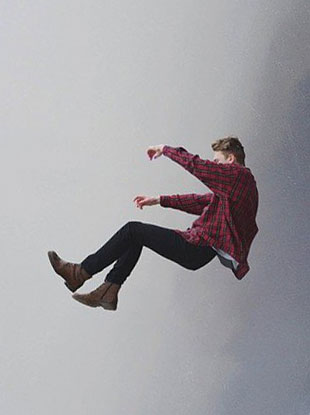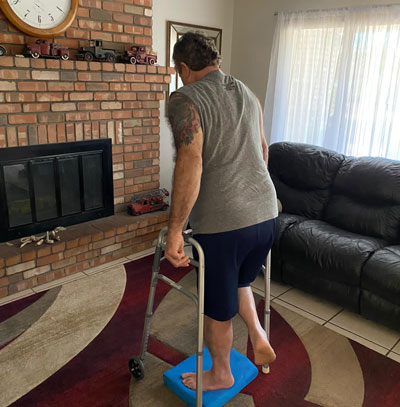Home modifications to prevent falls for senior populations in their homes.
In this writing, we will talk about falls and their consequences, and discuss some tips and measures on how to prevent falls for the senior population in their homes primarily targeting the elderly group in Arizona
With age, health becomes a vital subject. Old-aged or seniors begin to face a variety of health conditions that affect their overall quality of life. Once a person crosses the age of 65, considered as retirement age for most countries around the world, signs of declination in one’s cognitive abilities begin to show, vulnerability to heart disease increases and pains in bones and joints arise. Other health issues like abnormality in blood sugar stability, stroke-related conditions, respiratory problems, and vision or hearing loss become more visible. Among these, body balance issues become prominent in the life of a senior citizen leading them to fall and causing injuries, both severe and mild among the aged group.

The good thing is many of the above health issues can be prevented, alleviated, or cured.
In this writing, we will talk about falls and their consequences, and discuss some tips and measures on how to prevent falls for the senior population in their homes primarily targeting the elderly group in Arizona, as our in-home physical therapy services are available in the region. Like any other region, senior citizens in Phoenix, Glendale, and the surrounding cities the old aged require due attention pertaining to their physical health issues. And falling due to imbalance, weaknesses, and rigidity of their body with aging is a common observation among the senior citizens in the state.
So, what are falls?
Fall is when you lose body balance and collapse on the ground or floor. Some falls may be harmless, while some result in mild and temporary pains but others could cause severe pain through fractures or displacement leaving permanent damage or impairment in the body. As per Interventions for preventing falls in older people living in the community (Review), Cochrane Database of Systematic Reviews 2012, one in five falls may require medical attention, and less than one in ten results in a fracture. Most falls happen at home and while children and youths could balance themselves to mitigate health impact, the elderly are at higher risks of requiring immediate medical needs or facing even fatal accidents.
Consequences of falls.
Falls could have three negative consequences: Physical, Social, and Psychological.
- Physical:
- Social:
- Psychological:
Most of the fall-related problems are minor: bruises, sprains, body cuts. But it also could have serious consequences against our physical body such as fractures, head injuries, etc. According to studies, 10% of the falls result in a fracture requiring hospital admittance or medical needs.
As a result of physical damages to the body, free or independent mobility could be reduced. And with less or dependent mobility, it puts a strain on the individual and immediate families. Health burden increases and medical expenses rise. It is also likely that one could be admitted to a nursing home. Thus fall-related issues could lead to decreased quality of life.
Apart from physical and social consequences, falls either of recent past or of distant occurrence could also have negative psychological consequences against a person. One may develop constant fears of moving around independently, as a result limiting their physical activities and social interactions. Frustration arises at the loss of independence to carry out daily activities. Many prime years could be wasted or the hope to enjoy one’s post-retirement phase could be dashed.
Statistics on falls:
Falls are common everywhere. People fall on the staircase, in the bathroom, living room. The elderly could even fall when at mere standing due to the weakness felt at the lower half of their body. So, it will be hard to come up with concrete numbers to the minute details. Nevertheless, below are some statistics about falls based on some research:
- One out of three of the populations who are above the age of 65 fall every year.
- Around 10% of the falls result in a fracture.
- According to WHO, it is estimated that 684,000 individuals die from falls globally.
- Falls are the major cause of traumatic brain injuries (TBI)
- In 2015, More than 50 billion USD is spent as medical expenses on falls and related problems.

But, why do we fall?
Some of the factors that lead to falls at home are listed below:
- Old age-related health issues
- Sickness and poor health
- Vision impairment
- Hearing loss
- Medication effects
- Alcohol intakes
- Home hazards
- Slippery floors
- Uneven steps
- Absence of proper railings for hand supports
- Improper footwear
How can we prevent falls among the elderly since we know it is not a normal part of aging?
It is common knowledge that the elderly are prone to falls at home. But while statistics may say that falls happen to every one of the three in the elderly population who are above the age of 65, it is to be noted that falls are not a normal part of aging.
They can be prevented or the damage can be mitigated if one takes proper measures such as the following:
- Check that home hazards like slippery floors, improper staircases or stairs, messy cables and objects on the floors, etc. that could cause a fall are taken care of.
- Seek the help of doctors in case of dizziness or balance loss due to intake of medicines.
- Keep your body in good shape by exercising regularly. Taking long walks to keep your muscles strengthened and relaxed may help prevent falls.
- Check on an occupational therapist for additional help.
- Group and home-based exercise programs that involve some balance and strength training exercises, effectively reduced falls, as did Tai Chi. Overall, exercise programs aimed at reducing falls appear to reduce fractures.
- Interventions to improve home safety appear to be effective, especially in people at higher risk of falling and when carried out by occupational therapists.
Check-in with an occupational therapist may be able to help in assessing the requirement to prevent falls at home. Petkov Bodywork Therapy provides home modifications services to prevent falls for senior populations in their homes in Phoenix, Scottsdale, Glendale, etc in Arizona.
How can Petkov Bodywork Therapy in Arizona help you to take measures to prevent falls in the elderly of Phoenix and the surrounding areas?
Petkov Bodywork therapy is a mobile physical and occupational therapy provider for adults and seniors in Phoenix and the surrounding areas.
- We use a wide variety of fall prevention services for seniors and our therapists treat most types of balance disorders
- Our focus is on fall prevention, and our comprehensive treatment plan has the potential to prevent 30 to 40 percent of all falls.
- We employ tailored balance retraining and vestibular adaptation exercises, gait and safety training, and muscle strengthening
If you are looking for an in-home physical or an occupational therapist in Phoenix who can help you take fall prevention measures, call us at 480-389-4081.
Jager TE, Weiss HB, Coben JH, Pepe PE. Traumatic brain injuries evaluated in U.S. emergency departments, 1992–1994. Academic Emergency Medicine 2000&359;7(2):134–40.
Vellas BJ, Wayne SJ, Romero LJ, Baumgartner RN, Garry PJ. Fear of falling and restriction of mobility in elderly fallers. Age and Ageing 1997;26:189–193.
Interventions for preventing falls in older people living in the community (Review) Copyright © 2012 The Cochrane Collaboration. Published by John Wiley & Sons, Ltd.